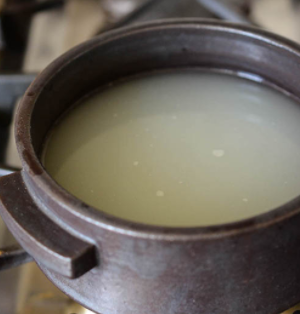Vedic Construction:
We see Sthapatya Veda is an ancient system and knowledge that involves the connection between the people and buildings where we live and work. The Chinese concept of Feng Shui is just a recent concept but the Vedic Construction technique and knowledge date back 5000 years but many say it's older than that.
Here we will cover what material they had, what knowledge they spread out, and what tool and technique they used with geometry and ancient text available.
Vedic Material:
Vedic materials consisted of mud, lime, stones, wood, initial metal such as copper, and precious stones. Vedic plaster contains cow dung and gypsum among other natural materials according to manufacturers, also curing is not required or necessary as per work. Some places saw the use of Rice Water with Lime is mixed and that paste is used to fill and connect joints.
They also developed techniques of making bricks with mud, clay molding it in hand molds, and wooden molds which are referred to in Vastu Vidya. They also mastered Floating Bricks which are found near Kurduwadi. They are 2 to 10 times lighter than our modern bricks because they contain micropores that are partially interconnected, which we have today made with air entertaining additives. Now let’s see what additives in Vedic Civilization do Civil Engineers have.
They also developed techniques of making bricks with mud, clay molding it in hand molds, and wooden molds which are referred to in Vastu Vidya. They also mastered Floating Bricks which are found near Kurduwadi. They are 2 to 10 times lighter than our modern bricks because they contain micropores that are partially interconnected, which we have today made with air entertaining additives. Now let’s see what additives in Vedic Civilization do Civil Engineers have.
Vedic Additive:
The list of additives consisted of lime powder, cow dung, gypsum, barks of milky trees, Trifala/Triphala decoction, rice water, etc. Many types of research show the use of gyrolite & stilbite. Here triphala and rice water were mixed with lime powder and gypsum paste today called lime mortar. The other materials like gyrolite and stilbite today show properties of healing bone pain and remove toxins from the body respectively.Vedic Tools:
Initially, they had just shelters, tents made up of wood and leaves. With time they began to use rocks as blocks and constructed shelters and pathways for the community. They soon made tools of rock which were used for hunting and other works. As they got to know about metals they created tools out of them. The tools which were recovered from the archeologist consisted of Shovels, Trowels, Spades, Brushes, Sieves, and Buckets which were common and obvious tools. Many archeologists say that there is a discontinuity between Indian and outside Indian research work and that gap has to be filled and raises a question that all archaeologists should ask right now.Vedic Techniques & Geometry:
This is a picture from Vedic books and by this, you can easily find the length of the section to be built. This was even before the Pythagoras Therom came out.The Vedic technique can be classified into two parts,
This is a picture in Vedic books which dates even before Pythagoras and shows how accurately you can find the length. It was also found that pie value was also exactly the same which Vedic books show.
- Vastu Shastra (Building Plans)
- Vastu Purusha Mandala (Building Geometry and Alignment)
This is a picture in Vedic books which dates even before Pythagoras and shows how accurately you can find the length. It was also found that pie value was also exactly the same which Vedic books show.
Vastu Shastra- This deals with aspects of designing and living environment. Vastu can be subdivided as:
- Bhoomi- Earth
- Prasada- Structure
- Yaana- Movable Objects
- Sayana- Furniture
Vastu Purusha Mandala- This deals with Mathematical and Diagrammatic design whereas Mandala is referred to as a plan/chart which represents the cosmos symbolically. It is seen in many places such as buildings, temples, and sites that hold the course of the heavenly bodies and supernatural forces.
The Purusha Mandala is depicted as lying as head in the Northeast and legs in Southwest and keeps changing its position throughout the year.
The Purusha Mandala is depicted as lying as head in the Northeast and legs in Southwest and keeps changing its position throughout the year.
Vedic Text:
There are texts which also show that there was soil testing done in that time such as:“Purvarn Bhumirn Prikseta Pascat Vastu” is the: First test of the earth (site) after that plan construction.
“Valmikena Samayukta
Bhumirasthiganaistu ya
Randhranvita ca Bhurvarjya Ghatighesca
Samanta” that is Land and anthills, skeletons, full of pits and craters should be avoided.
“Yavattatra Jalarn Drstarn Khanettavattu
Bhula” that is Till water is seen there, one should dig the ground.











Thank you so much.
ReplyDeleteComparta gran información sobre su blog, Blog realmente útil para nosotros.
ReplyDeletecialis genérico
Impressive and powerful suggestion by the author of this blog are really helpful to me.
ReplyDeletedental surgery in Ballarat